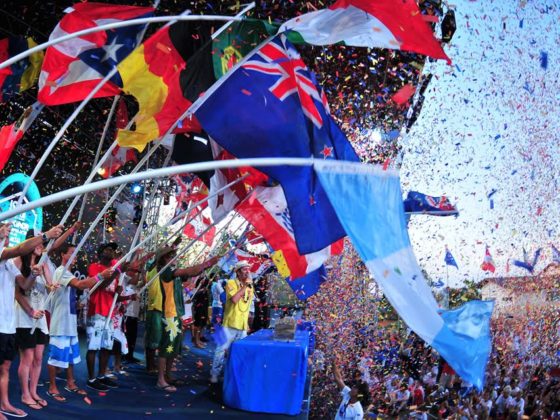1. This was Duke’s vision.
Five-time Olympic medalist in swimming and ambassador of aloha Duke Kahanamoku is perhaps solely responsible for the wide-spread popularity of modern surfing. And way back in the early 1900s, Duke expressed his desire for waveriding to be included in the Games. On Wednesday, the 129th session of the International Olympic Committee (IOC) in Rio de Janeiro confirmed the decision that surfing will be included in the 2020 Olympic Games in Tokyo, Japan — over 100 years since Duke’s original request.
